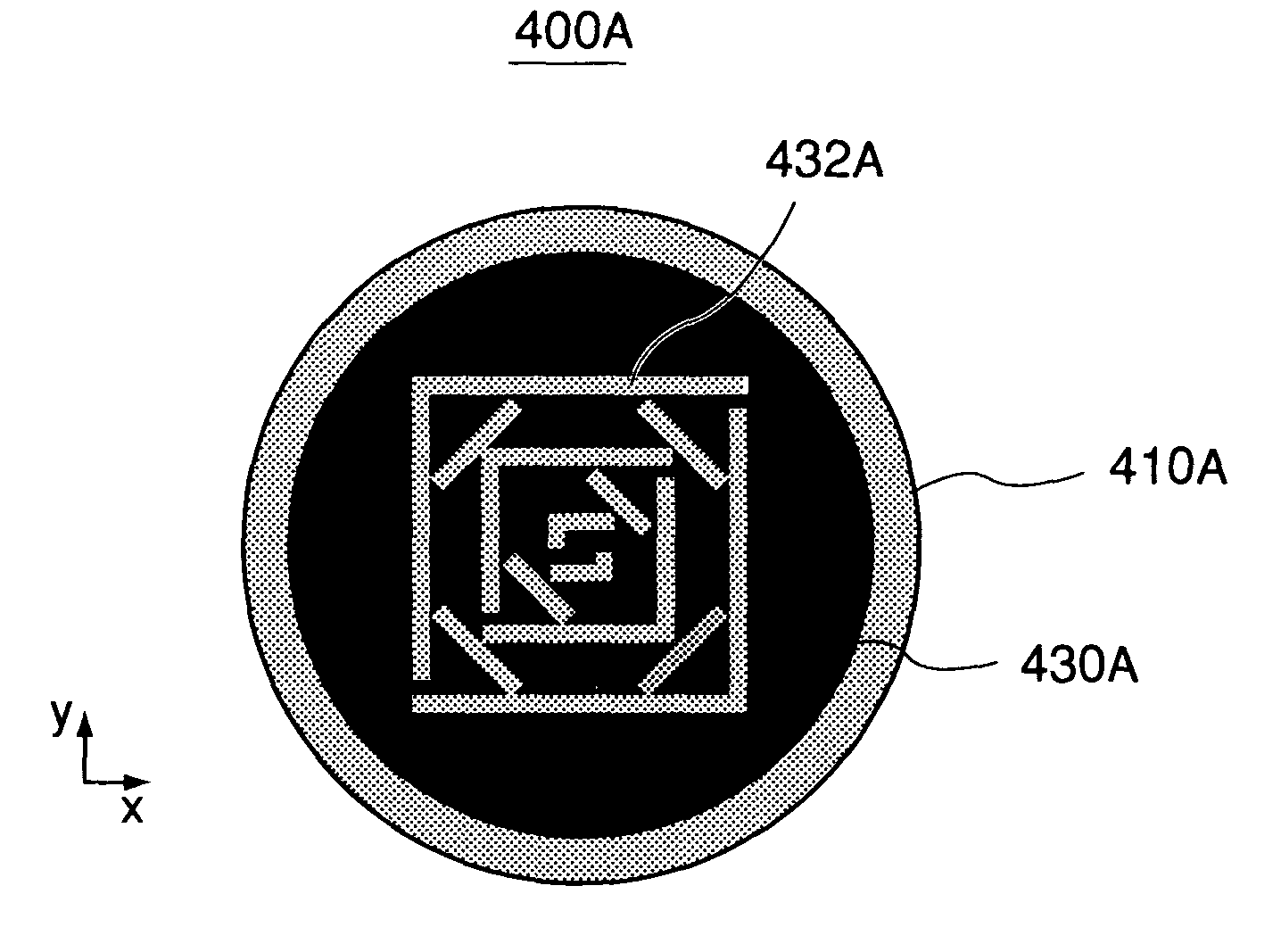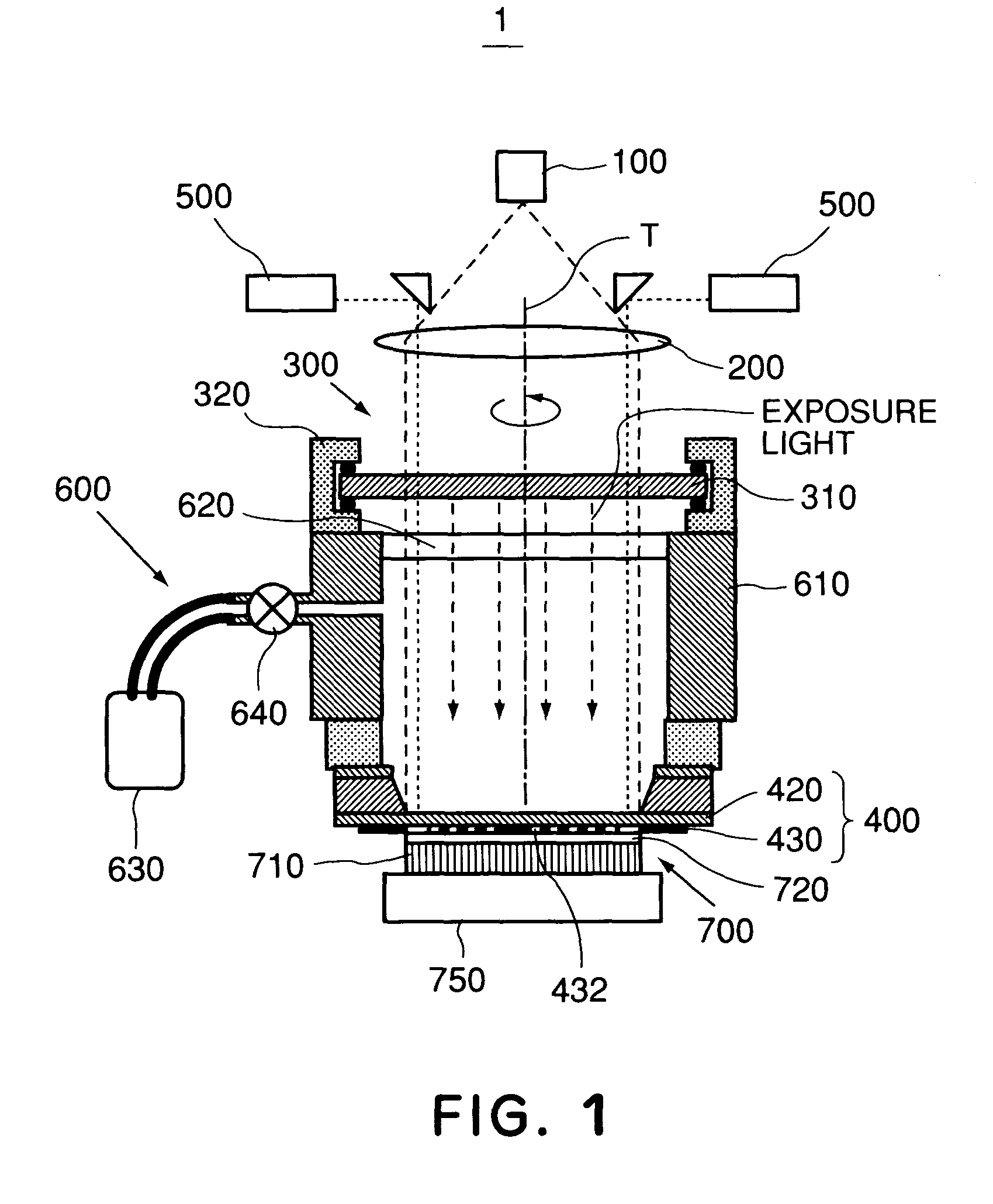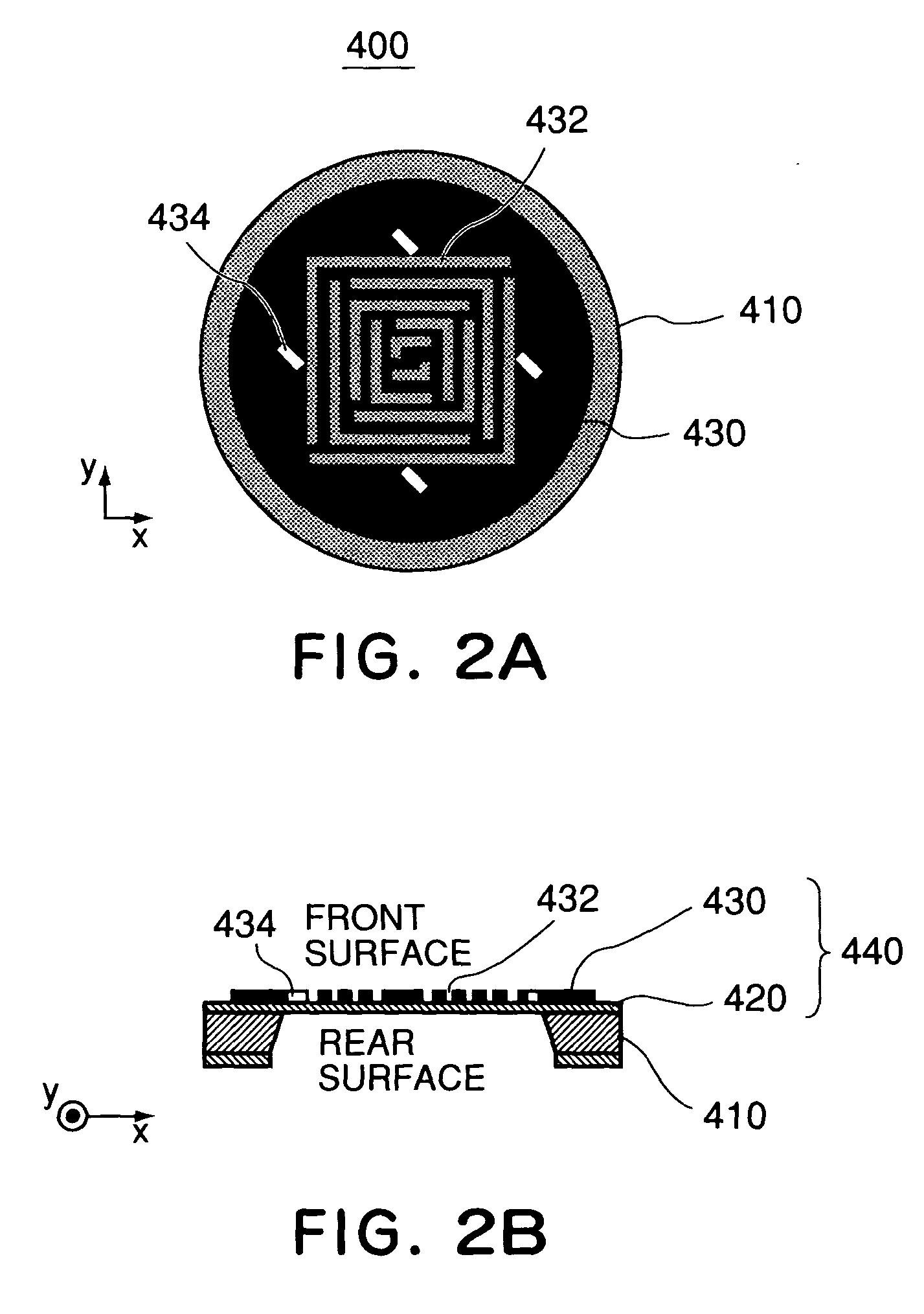Mask, exposure apparatus, and exposure method
- Summary
- Abstract
- Description
- Claims
- Application Information
AI Technical Summary
Benefits of technology
Problems solved by technology
Method used
Image
Examples
example 2
[0105] Now, a case where an exposure apparatus IA operates to transfer a pattern formed on a mask 400A in a batch process will be explained. For manufacture of a mask 400A, silicon wafer Si (100) was chosen for a mask supporting member 410A. Upon this Si substrate, SiN film as a mask base material 420A was formed with a thickness 500 nm, in accordance with LPCVD (Low Pressure Chemical Vapor Deposition) method. Further, upon the mask base material 420A, a Cr film as a light blocking film 430A was formed with a thickness 50 nm, in accordance with a sputtering method. Small openings 432A (opening diameter not greater than 100 nm) of a size not greater than the wavelength of exposure light, were formed on the light blocking film 430A into a desired pattern, by means of electron-beam lithographic method. In this embodiment, the small openings 432A have their lengthwise directions extending in arbitrary directions, as shown in FIG. 7.
[0106] Subsequently, at the surface on the opposite sid...
PUM
 Login to View More
Login to View More Abstract
Description
Claims
Application Information
 Login to View More
Login to View More - R&D
- Intellectual Property
- Life Sciences
- Materials
- Tech Scout
- Unparalleled Data Quality
- Higher Quality Content
- 60% Fewer Hallucinations
Browse by: Latest US Patents, China's latest patents, Technical Efficacy Thesaurus, Application Domain, Technology Topic, Popular Technical Reports.
© 2025 PatSnap. All rights reserved.Legal|Privacy policy|Modern Slavery Act Transparency Statement|Sitemap|About US| Contact US: help@patsnap.com



